Imagine when three puma trekkers witnessed something they had never seen in each of their seven years experience among pumas in Patagonia, Chile not counting their prior multiple years with jaguars and pumas in the Pantanal,Brazil. Luckily our group of five photographers plus our photography master were able to witness an unexperienced young female puma encounter a living, young guanaco or chulengo. (Guanacos are the wild origin of the domesticated llama.)
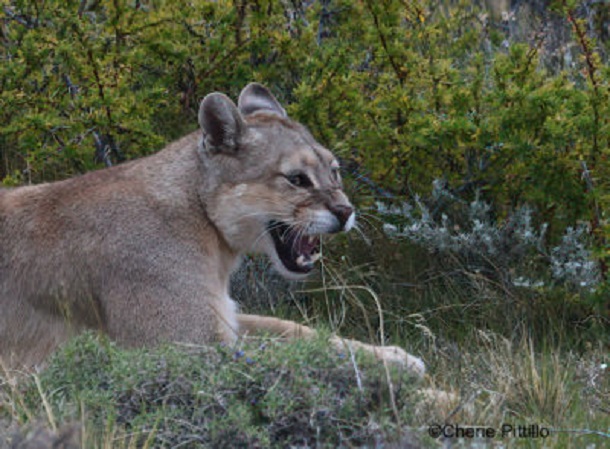
Although the puma appears to growl or snarl in the first three images, this facial behavior is part of the flehmen response. It is not an aggressive posture. Until I saw this behavior, I always linked “flehmen” to a male mammal such as a lion or horse or with my experience to cattle, a bull. This process involves inhaling pheromones from a female to indicate her readiness to mate whether the scent is in the air or from urine or other sources. In this case, the cat opened its mouth to bring in air carrying those pheromones into the Jacobson’s organ via a duct located in the roof of the mouth. (Humans don’t have that specific organ.) It did this several times. That action amplifies the sensitivity to scent. But I also learned that not only does this response help with courtship, but it can help with defining prey or location or others of the same species.

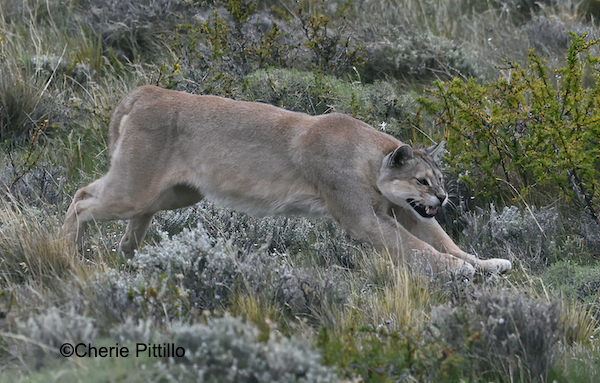
Our puma leader remarked how the cat’s reaction to its own adrenaline was so pronounced that she was unsure of what to do. She charged the chulengo several times and also patted it with her paws to make it move, which it didn’t for awhile. Or the cat jumped around it. Then the puma would run away and take more deep breaths. Other times she would lie close.






Eventually, the chulengo stood up, ran, and then rested, and the cat did the same. One time they actually collided but both stopped and rested again. Finally the cat gave chase as they both ran out of sight with the chulengo ahead. We didn’t pursue them.




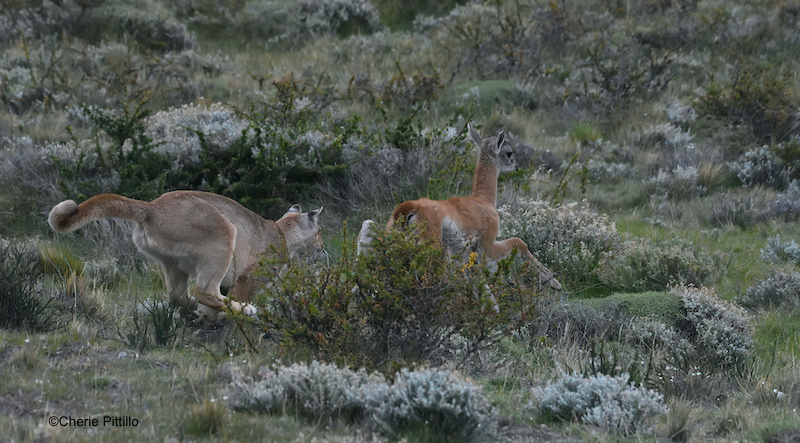
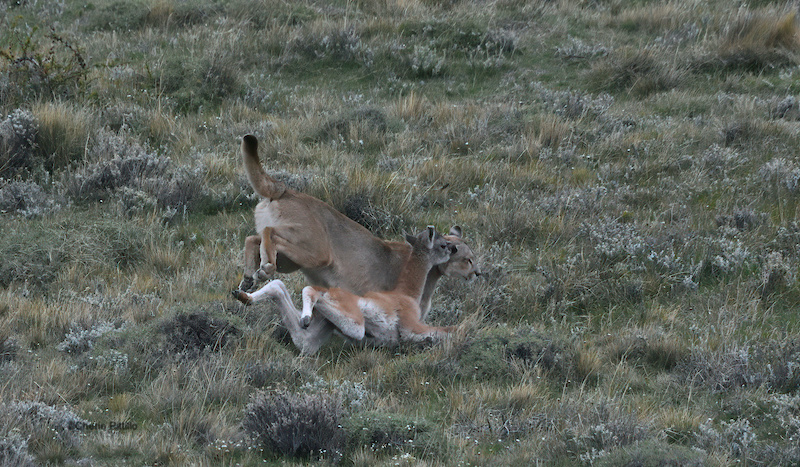


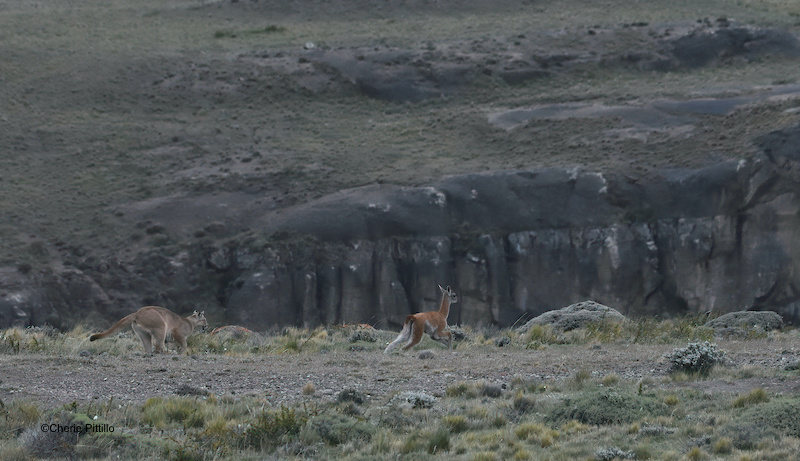
Those of you with pet cats know this game of “cat and mouse.” But a puma gradually learns the skills of how to hunt its prey and survive through this “game.” Just know that adult pumas typically would not spend their time nor energy “playing with their food,” as their success rate of killing their prey, such as a 250 pound adult guanaco, may be one in ten.
Now I imagine some of you were hoping throughout this story that the young guanaco escaped. As humans, we seem wired to protect babies/young especially if we, or even The Walt Disney Company, have deemed them “cute.” Remember Bambi and Thumper? Often the carnivore is depicted as the villain in tv, social media, and even cartoons or other animation. Maybe we want the predator killed or harmed or eradicated from the area, especially when it attacks a young animal.
Here’s the question: should the predator die because it hasn’t learned to catch its cute prey? Isn’t it also a young, pretty animal that needs food? What if it isn’t pretty or maybe considered ugly? Many puma cubs don’t survive their first year. Just a question to ponder because more amazing research about the lives of pumas and guanacos as well as other wildlife of Patagonia, Chile will be revealed in future columns.
NATURE NEEDS PREDATORS FOR A BALANCED ECOSYSTEM.
DISCLAIMER: References do not agree. Plus I may not have found the latest research in my efforts.
En El Limite/On the Edge Puma Torres del Paine by Nicolás Lagos Silva; A Wildlife Guide to Chile
https://cdr.lib.unc.edu/concern/honors_theses/v979v836s
Cherie Pittillo, “nature inspired,” photographer and author, explores nature everywhere she goes. She’s identified 56 bird species in her Merida, Yucatan backyard view. Her monthly column features anecdotes about birding in Merida, Yucatan and also wildlife beyond the Yucatan.
Contact: [email protected] All rights reserved, ©Cherie Pittillo
